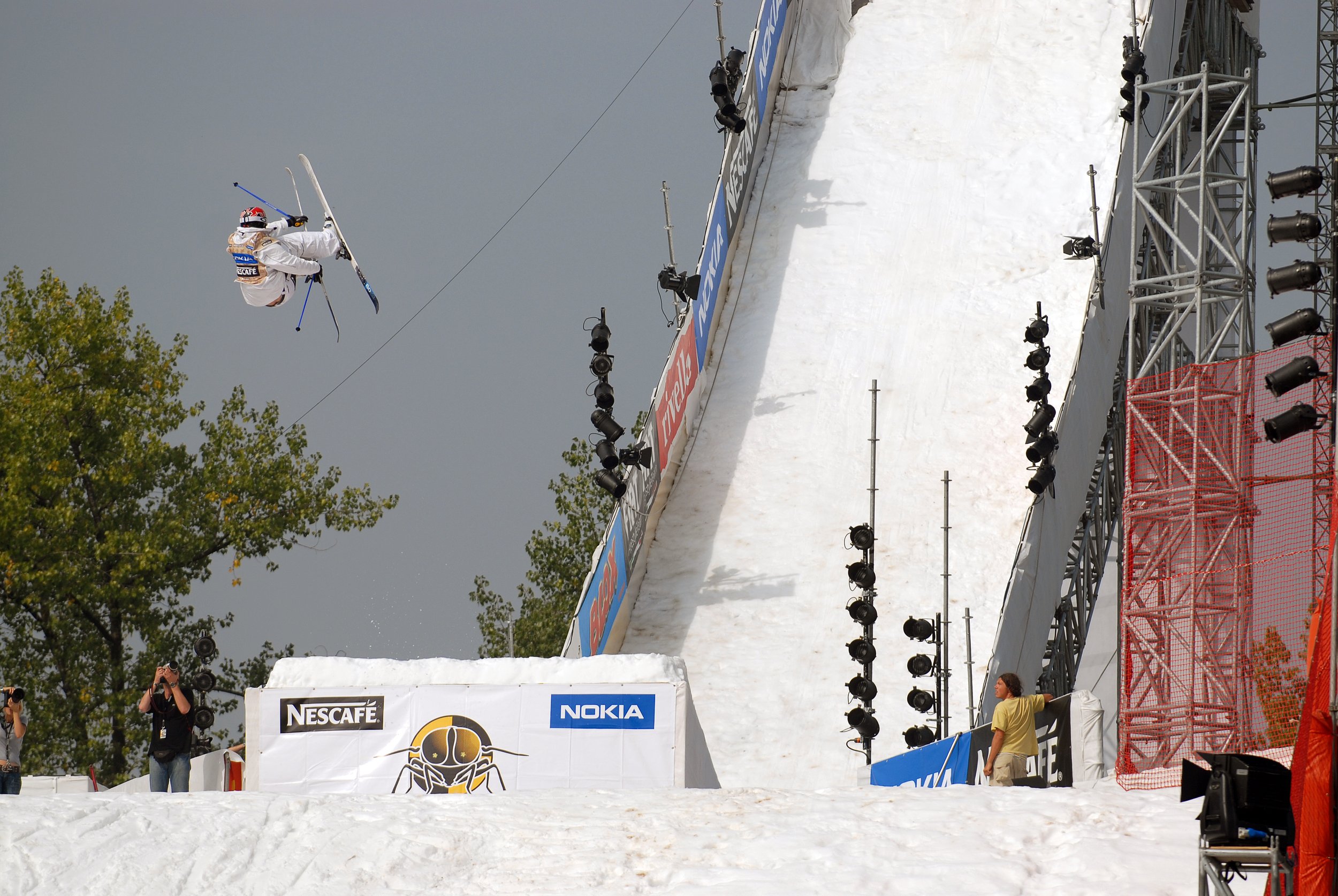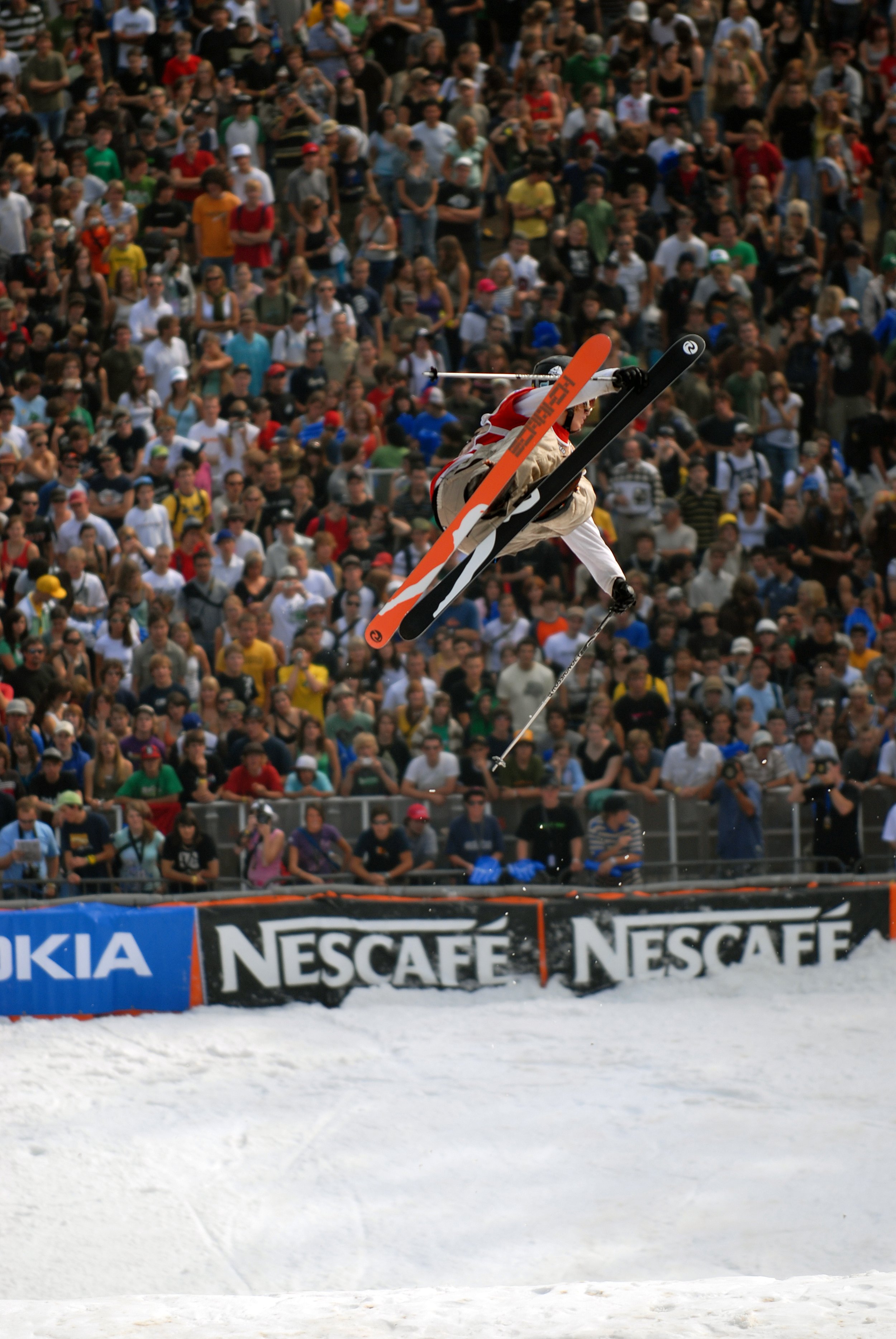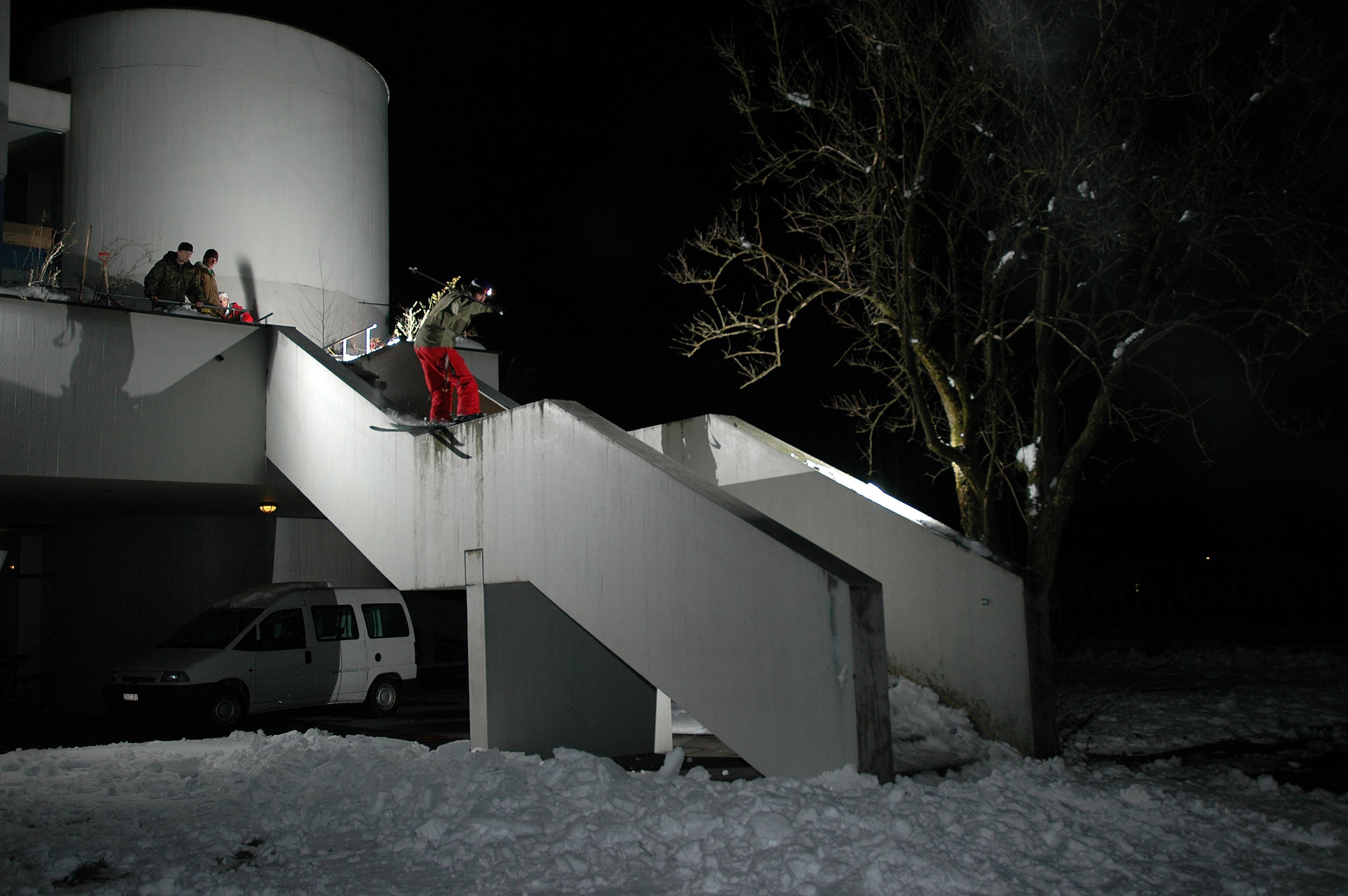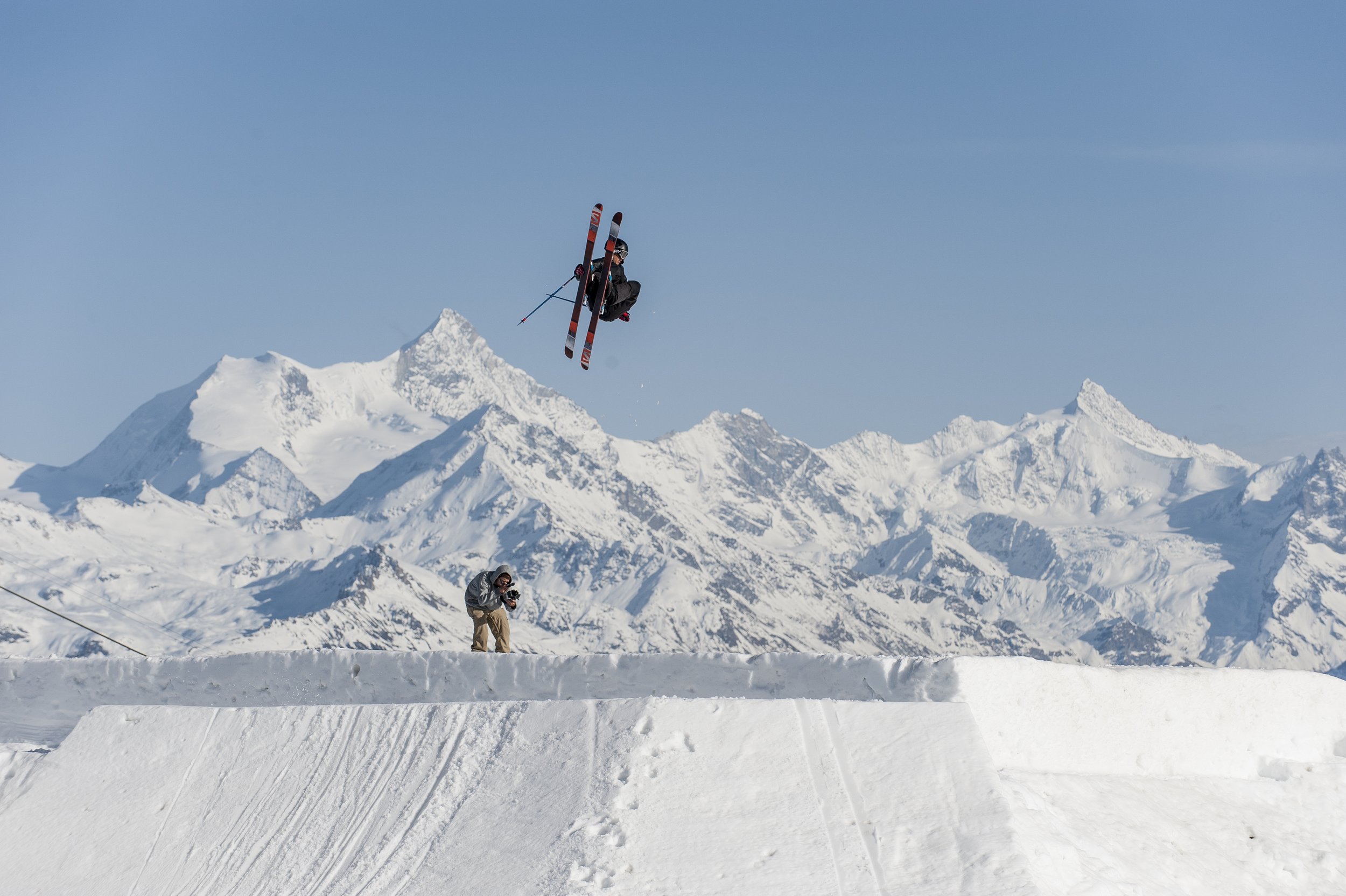The Parkski - a relic of the past?
Repeated for years by all the ski shop managers, you surely know this dejected statement: "Park skis, it's over, it does not sell anymore". So as an enthusiast, to hear that my sport is doomed to a certain death, it raises questions. In 10 years, will we still be the same 100 park rats turning tirelessly on the ski lifts of the last existing snowparks in Romandie? Breaking the edges of our twintips on metal tubes? Being laughed at by all the Gore-Tex free-riders? Knuckle Mag has investigated for you. Is park skiing really a relic of the past?
Jon Olson at Freestyle.ch in 2006, on the Head Mojo 80
To answer this existential question, I asked various brand representatives, marketers and connoisseurs to give me their opinion on the matter. And when asking ski brands how many freestyle skis they sell, one thing jumped out at me every time: everyone brags about the essential role their brand played in the advent of freestyle skiing. "At K2, we either set the trends or we support them," says Christophe Zufferey. Head equipped Jon Olson from the first flat 5 of the tall blond. Salomon has supported the transgressions of the New Canadian Air Force since its inception.
With the church back in the middle of the village and everyone valiantly holding up their medals, let's begin our analysis. "Sales of freestyle skis have fallen off," says Christophe Zufferey. According to him, the figure has even fallen by half since the golden age of 2005. The world ski market is 3.5 million pairs per year. A staggering figure, of which only 4-5% are freestyle skis.
The total number of freeski pairs would be 15%, with a majority of freeride skis (10-11%) which also include flat heel skis. This figure is an estimate provided by Faction based on the statistics available to them and should not be taken literally.
I tried to find out from my interviewees how many skis they were selling. But I ran into two barriers. The first was the need for confidentiality from the competition. I learned that Atomic sells about 500 pairs of Bentchetler 90s and 100s combined every year in Switzerland. K2 sold 600 pairs of Poacher, Reckoner 102, Sight and Midnight together in our country in 2022. A very meager haul, for my information fishing as well as for the brands that were willing to confide in me. "The Swiss freeskiing market is really bad, compared to other regions like Norway or the United States," says Jean-Claude Pedrolini, head of marketing at Völkl.
The second difficulty in this questioning is to define what is a "park ski". 10-15 years ago, consumers had three choices: either carving skis, powder skis or park skis. Today, the range has diversified enormously and the boundary between genres has become very porous. Is a Line Blade or a Faction Prodigy 3.0 really a park ski?
Andreas Hatveit at Freestyle.ch in 2006, on the Rossignol Scratch FS
The numbers are partial, the categories are blurred. And a purely quantitative approach doesn't paint a true picture of how the ski market has evolved since 2005. "15 years ago, shops only sold twintips. People bought them en masse because they were the only cool alternative to carving skis," explains Christophe Zufferey. Quentin Boutry, product manager at Salomon, sees a second reason for the explosion in sales of twintips in 2005: "The brands had felt things moving with the arrival of freestyle. The market followed and the distribution networks were flooded with freestyle skis," he says.
Skiers just wanna have fun!
Since then, this excitement has gradually faded. But the advent of freestyle has left an indelible mark on the ski market. Skiers want to have fun. "Today's all-mountain skis are inspired by freestyle, not race skis: the skis are more maneuverable, with rockers and a more permissive flex," notes Tim Harty, head of marketing at Faction. "Freestyle is like a bacterium that has spread to all ski practices," says Quentin Boutry. The monopoly of pure-piste skis has had to make room for more versatile, more fun skis. Salomon reflects this evolution. The French brand has dropped the park ski business, but the freestyle influence remains omnipresent in their range. Today, Salomon sells 40% piste/race skis, 20% allmountain models and 40% freeride and rando skis.
"Now you can be cool by buying a Mindbender 108, a ski with a flat heel," says Christophe Zufferey. Skiers are buying models that are more suited to their skiing, since the market has diversified. But now that the general public has turned its back on freestyle skis, who buys them?
Ruedi Flück, on a ledge in Lucerne 2005, on the first Armada AR5
Who buys the skis you see in the slopestyle world cup? Nobody? Who buys the pairs of K2, Faction, Line, or Armada that we see all the time on Instagram? A few thousand people in Switzerland, most likely, that you see on weekends in Leysin, Crans, Laax, Davos or Adelboden. The market is not dead. The impressive growth of Faction over the last few years is proof of that. But it is a niche market. The interviewees agree on this point. So why do brands continue to develop these freestyle lines?
A niche that inspires
It will surprise no one, but the snowpark ski market is not the most promising. The decerebrate post-adolescents who populate the chill zones will not pay 600.00 for their skis if it is to destroy them on rails. The brands don't count on them to earn their bread. But until proven otherwise, it is these same park rats with oversized pants that inspire the young skiers, and therefore the buyers of tomorrow.
"Remco Kayser, Yohan Lovey, or the Buldoz in general, these are skiers who have an influence and who inspire! Unlike slopestyle or halfpipe, it seems accessible and it makes you want to do it," says Quentin Boutry. In the same way, if K2 remains "cool", it is by betting on EZ Panda, Kai Mahler or Joona Kangas, rather than on medal machines in the World Cup or on the Freeride World Tour.
Nicolas Vuignier in Crans-Montana on the Salomon Remix in 2013, the year from which Salomon progressively dropped the freestyle business
Cyrill Hunziker in Livigno in 2011, on the Ace of Spades TI, a model abandoned two years later by Nordica
"What consumers do on skis and what inspires them are two different things," analyzes Tim Harty. "Faction's mythical ski was the Royal, but we sold only a few hundred pairs worldwide in the best years. For the Candide 5.0, we never sold a lot of them. They were never commercial skis, but it's with these pairs that we communicate the brand and its values," he explains. It doesn't matter whether they are 125mm underfoot bananas or pure park skis, if only a few hundred enthusiasts buy them.
Paths to the future
What does the future hold? Will these fervent practitioners survive the advent of new fashions and practices? The freeride-rando virus seems to be spreading, but the death of freestyle skiing is not for now! "There will always be a hard core of park skiers. Freeskiing is a culture, like skateboarding or snowboarding. I even see a strong comeback of this sport in the next few years", announces Quentin Boutry. An optimism shared by the K2 representative: "There will be a renaissance of freestyle. Freeride is great, but with ever-warmer winters, powder days will be counted on the fingers of one hand. I'm reassured!
A return to the park? Perhaps. Another explanation is the era of "post-park skiing", a theory that skier Sämi Ortlieb took the time to explain to me. The time when each resort had its own snowpark is over. This is due to the astronomical cost of snow parks and their low profitability, except when FIS competitions suddenly rekindle the love of the resorts for halfpipes and slopestyles. But the stone can also be thrown at a sport that has become too elitist. The parks are privatized for the happiness of the national selections and their flocks of daddy's children. A career in freestyle skiing today is bought with Stomping Ground and Prime Park sessions, betting big on the most promising elements. "The competition world can't go back," says Sämi.
The era of "post-park skiing" means allowing ski racing to continue its wild ride. Until recently, we were drooling over every additional half-rotation. Now we know that a quadruple cork 1980° and a switch double cork 2160° is possible. So we save our breath for the videos of Forre, Zootspace or Strictly. Films that make you want to put on your skis and inspire you to do something "cool" with them, to use Christophe Zufferey's word. And expressing your creativity on hard or soft snow, in your local park or on the side of the slope, you can't do that with World Cup stiff sticks. Post-park skiing requires more versatile pairs, rarely under 100mm underfoot and with big rockers, please! So this is the new trend? It seems that a few brands are already on it.
Laurent De Martin in Crans-Montana last spring, on the Recreation prototypes. His brand Simply. claims the versatility characteristic of "post-park skiing"
Text by Maé Biedermann





